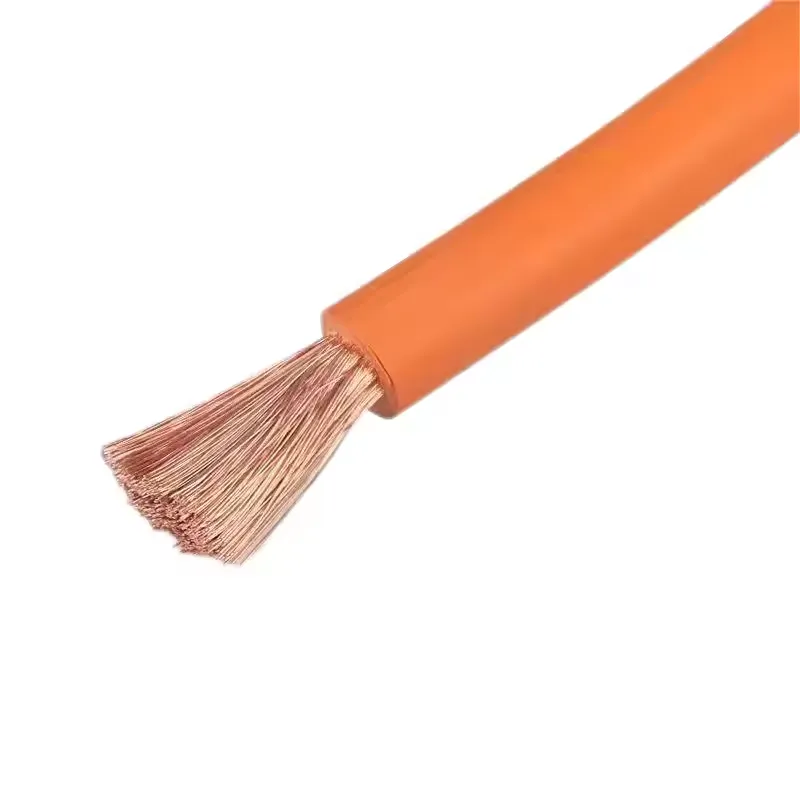Why Copper Power Cables Are Preferred Over Aluminum
Time: 2025-05-30 03:38:09
Source: Henan Province Jianyun Cable Co., Ltd.
1. Introduction
Power cables are critical for transmitting and distributing electrical energy, and the choice of conductor material significantly impacts performance, safety, and cost. Copper and aluminum are the two most commonly used conductor materials, but copper is often preferred in many applications due to its superior electrical conductivity, mechanical strength, and practical advantages. This document explains why copper power cables are favored over aluminum, comparing their properties and addressing key considerations for their use.
2. Superior Electrical Properties
Copper’s electrical characteristics make it a preferred choice for power cables in many scenarios:
-
Higher Conductivity: Copper has a conductivity of approximately 58 MS/m (mega-siemens per meter), compared to aluminum’s 35 MS/m. This means copper conducts electricity more efficiently, resulting in lower resistive losses and higher energy efficiency, particularly in high-current applications.
-
Lower Resistivity: Copper’s resistivity is about 1.68 µΩ·cm, compared to aluminum’s 2.82 µΩ·cm. This allows copper cables to carry more current for a given cross-sectional area, enabling smaller cable sizes for the same load.
-
Better Performance in High-Voltage Applications: Copper’s superior conductivity reduces voltage drop over long distances, making it ideal for high-voltage and critical applications where efficiency is paramount.
Back to Top
3. Mechanical Advantages
Copper’s mechanical properties contribute significantly to its preference over aluminum:
-
Higher Tensile Strength: Copper has a tensile strength of approximately 200–250 MPa, compared to aluminum’s 90–150 MPa. This makes copper cables more resistant to stretching and breaking under mechanical stress, such as in overhead lines or during installation.
-
Greater Durability: Copper is less prone to fatigue and creep (gradual deformation under load), ensuring long-term reliability in dynamic or high-stress environments.
-
Corrosion Resistance: Copper forms a protective oxide layer that prevents further corrosion, unlike aluminum, which can corrode in certain environments (e.g., coastal areas with high salinity), leading to potential failure.
Back to Top
4. Practical and Installation Benefits
Copper cables offer practical advantages that make them easier to work with in many scenarios:
-
Ease of Termination: Copper is more malleable and compatible with standard connectors and lugs, simplifying termination and reducing the risk of poor connections. Aluminum requires specialized connectors and anti-oxidant compounds to prevent oxidation at connection points.
-
Smaller Size for Equivalent Current: Due to its higher conductivity, copper cables can be smaller in diameter than aluminum cables for the same current-carrying capacity, making them easier to install in confined spaces.
-
Compatibility with Existing Systems: Copper is widely used in legacy electrical systems, ensuring compatibility and reducing the need for specialized adapters or transitions when upgrading or expanding infrastructure.
-
Lower Risk of Overheating: Copper’s lower resistance reduces heat generation, minimizing the risk of overheating at joints or terminations, which is a common issue with aluminum due to its tendency to form oxide layers.
Back to Top
5. Comparison of Copper and Aluminum Cables
|
Feature
|
Copper
|
Aluminum
|
|
Electrical Conductivity
|
58 MS/m (higher)
|
35 MS/m (lower)
|
|
Resistivity
|
1.68 µΩ·cm (lower)
|
2.82 µΩ·cm (higher)
|
|
Tensile Strength
|
200–250 MPa (higher)
|
90–150 MPa (lower)
|
|
Weight
|
Heavier (8.96 g/cm³)
|
Lighter (2.70 g/cm³)
|
|
Corrosion Resistance
|
Excellent (protective oxide layer)
|
Moderate (susceptible in certain environments)
|
|
Cost
|
Higher
|
Lower
|
|
Applications
|
Residential, commercial, high-voltage systems
|
Overhead lines, large-scale transmission
|
Back to Top
6. Disadvantages of Copper Cables
While copper is preferred in many cases, it has some limitations compared to aluminum:
-
Higher Cost: Copper is significantly more expensive than aluminum, increasing initial project costs, especially for large-scale installations like overhead transmission lines.
-
Heavier Weight: Copper’s density (8.96 g/cm³) is over three times that of aluminum (2.70 g/cm³), making copper cables heavier and potentially requiring stronger support structures for overhead applications.
-
Limited Use in Long-Distance Transmission: Due to cost and weight, aluminum is often preferred for high-voltage, long-distance transmission lines where weight savings and cost-effectiveness outweigh conductivity benefits.
Back to Top
7. Conclusion
Copper power cables are preferred over aluminum in many applications due to their superior electrical conductivity, mechanical strength, and practical advantages in installation and maintenance. Copper’s higher efficiency, durability, and ease of termination make it ideal for residential, commercial, and high-voltage systems where reliability and performance are critical. However, aluminum remains a viable choice for cost-sensitive, large-scale, or weight-critical applications, such as overhead transmission lines. The choice between copper and aluminum should be based on a thorough evaluation of electrical requirements, environmental conditions, and budgetary constraints.
Back to Top
